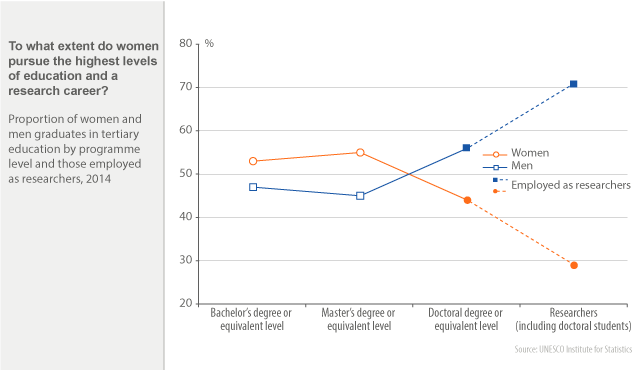Women are Missing from the Ranks of Higher Education and Research
Share
13/02/2017

To mark the International Day of Women and Girls in Science, the UIS is highlighting the persistent gap between men and women in doctoral studies and research.
In recent decades, women have made great strides in higher education. Men and women now embark on their university careers on an equal footing. In fact women made up a slightly larger share – 53% -- of graduates with Bachelor’s and Master’s degrees in 2014. But, degree in hand, women opt not to continue to advanced doctoral studies.
At the doctoral level, the share of female graduates drops to 44% and a mere 29% of researchers are women, in 110 countries with data. This is almost an identical pattern compared to 2008 data, suggesting that the rates at which women graduated with PhDs or engage in post-doctoral research has remained more or less stagnant.
To reduce this gap, the UIS is working with partners to go beyond the numbers and identify the barriers that deter women from pursuing careers in research, particularly in science, technology, engineering and mathematics (STEM).
The UIS is developing new indicators about the dynamics that shape women’s decisions to pursue STEM careers – from their educational preferences to social factors, such as starting a family and workplace environment. This evidence base will enable better targeting of policies through a new project, known as SAGA (STEM and Gender Advancement), supported by the Swedish International Development Cooperation Agency (SIDA).
* Mean values represent the weighted averages of the results in 112 countries with data